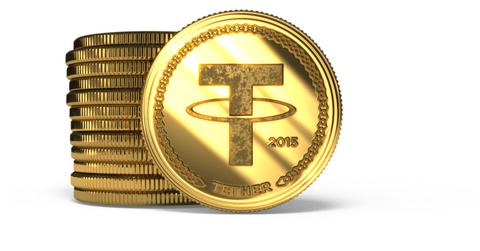Why Did Tether (USDT) Depeg From the U.S. Dollar?
Stablecoin Tether (USDT) has depegged from the U.S. dollar. Why was it depegged from the dollar? Here's what investors can expect.
May 12 2022, Published 11:40 a.m. ET
Stablecoins are having a hard time living up to their name. Tether (USDT), a stablecoin pegged to the U.S. dollar, briefly depegged from the one asset it claims to track.
Regulators in Washington, D.C. saw this coming, with remarks about the need for stablecoin regulation murmuring for months. What’s the real reason why Tether depegged from the U.S. dollar?
Tether (USDT) temporarily dropped below $0.96.
On May 12, stablecoin Tether temporarily fell below the $0.96 mark, which showed volatility for the U.S. dollar-pegged cryptocurrency. This means Tether aims to keep its value as close as possible to $1.00. USDT hit $0.96 shortly after 7:00 a.m. and reached $0.95 for about 15 minutes after that. It returned to $0.99 at 11:30 a.m.
The overall crypto market is in a heavily volatile period, with prices across the board sinking. Stablecoins, a subsector of cryptocurrency tied to fiat currency (such as the U.S. dollar), have proven that they aren't immune to crashes.
Why did Tether depeg from the dollar?
Tether isn’t the only stablecoin struggling right now. TerraUSD (UST) is another example of a stablecoin that’s seeing new lows. UST is native to the Terra blockchain and also aims to track the U.S. dollar, but its value is fluctuating around $0.50 on May 12.
Terra’s native token LUNA is on a downward spiral. LUNA lost an unbelievable 98.59 percent from its market capitalization in a 24-hour period.
Looking at this from a broader perspective, volatility currently has a major presence across all of the markets. From March 29 to May 12, the S&P 500 index dropped more than 15 percent. The Nasdaq Composite is down nearly 22 percent during the same period. In the crypto market, Bitcoin (BTC) is down nearly 40 percent during the six-week stretch. Perhaps it’s only natural for stablecoins like Tether to follow suit.
To be clear, not all stablecoins are in the red. Some dollar-pegged assets, like Binance USD (BUSD) and USD Coin (USDC), are trading above the $1.00 mark. The Tether pool invests at least half of its capital in commercial paper (short-term commercial debt), which would be a part of the depegging event.
Tether is honoring $1 redemptions.
Tether’s chief technology officer Paolo Ardoino says the company is honoring its promise to allow USDT redemptions at the $1.00 mark. Ardoino shared on Twitter that Tether has redeemed $300 million in tokens at the dollar value in the last 24 hours.
Regulators saw the stablecoin volatility coming.
In 2021, U.S. federal regulators were working to determine ways to oversee stablecoins. New York Attorney General Letitia James investigated Tether over its lack of transparency, ultimately requiring more clarity on what the company’s stablecoin pool is invested in.
Regulation on stablecoins is tricky. Many stablecoins, including Tether, operate outside of the U.S. The government hopes to be able to define stablecoins as being riskier than cash and cash assets. In time, it could treat stablecoins as securities, money market-style mutual funds, or even banks.


